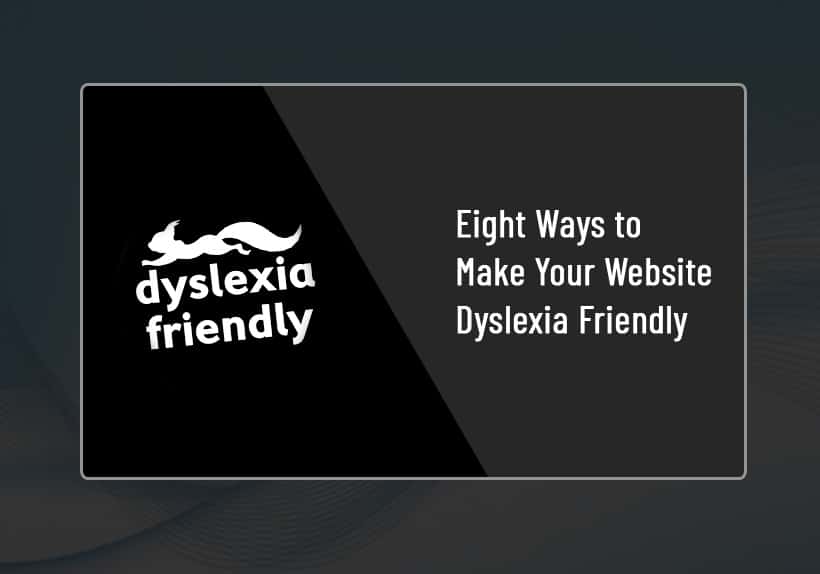Eight Ways to Make Your Website Dyslexia Friendly

Experts estimate that 10% of people worldwide – around 780 million people – have dyslexia. It comes in different forms, but the most common sign of dyslexia is reading difficulty. It is a learning disability that affects a person’s ability to write, spell, and read. Creating a dyslexia-friendly website will help ensure that all of your site visitors, including those with dyslexia, can easily understand your content. Here are some ways you can make your website accessible to people with dyslexia.
-
Use a Dyslexia-Friendly Font
One of the simplest ways to make your website more dyslexia friendly is to use a dyslexia-friendly font. Dyslexia-friendly fonts are designed to make reading easier for people with dyslexia. They are often sans-serif and have larger spaces between letters, making them easier to read. While you can use common fonts such as Arial, Verdana, or Comic Sans (yes, that Comic Sans!), dyslexia-specific fonts such as OpenDyslexic or Dyslexie can also improve readability.
-
Increase the Line Spacing
Increasing the line spacing on your website can also make it more dyslexia friendly. When the lines are spaced further apart, it can make it easier for people with dyslexia to distinguish between each line of text. Increasing the line spacing is a simple change that can be made by adjusting the CSS on your website.
-
Use a High-Contrast Color Scheme
Using a high-contrast color scheme can help make your website more accessible for people with dyslexia. This means using colors that are almost on opposite ends of the color spectrum, such as black and cream or pale yellow. We don’t recommend a stark contrast, such as black and bright yellow, as it could make the text look blurred for people with certain types of visual impairment. If you need to use a background image, add a solid background behind the text to make it more readable.
-
Limit the Use of Text Effects
Using too many text effects on your website, such as bolding, italicizing, striking through, and underlining, can make it harder for people with dyslexia to read the text. These effects can make the letters and words look jumbled, which can be confusing for people with dyslexia. Limiting the use of text effects can help make the text on your website easier to read.
-
Use Descriptive Headings
Using descriptive headings can help make it easier for people with dyslexia to navigate your website. When headings are descriptive, it makes it easier for people to understand what the content on each page is about. This can make it easier for people with dyslexia to find the information they are looking for.
-
Provide Audio or Video Content
Providing audio or video content on your website can help make it more dyslexia friendly. People with dyslexia often have difficulty with reading and writing, but may have an easier time understanding information when it is presented in an auditory or visual format. Adding audio or video content to your website can help make it more accessible for people with dyslexia.
-
Use Bulleted Lists
Using bulleted lists can make your website more dyslexia friendly. When information is presented in a list format, it is easier for people with dyslexia to understand and remember. Lists can help break up large blocks of text, making it easier for people with dyslexia to read and process the information.
-
Provide Text-to-Speech Software
Providing text-to-speech software on your website can also make it more dyslexia friendly. A screen reader allows people with dyslexia to listen to the text on your website instead of reading it. This can make it easier for people with dyslexia to understand the information on your website.
Making your website dyslexia-friendly
In conclusion, making your website more dyslexia friendly can help ensure that all visitors can easily access and understand the content. By using a dyslexia-friendly font, increasing the line spacing, using a high-contrast color scheme, limiting the use of text effects, using descriptive headings, providing audio or video content, using bulleted lists, and adding a screen reader to your website, you open up your website for everyone – including people with dyslexia.

